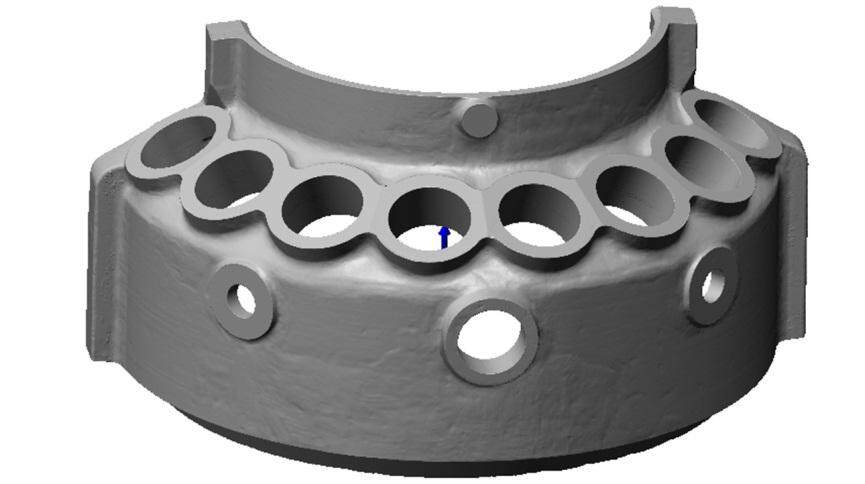ईमेल फॉर्मेट में त्रुटि भइल बा
ईमेल खाली ना हो सके
ईमेल पहिलहीं से मौजूद बा
6-20 अक्षर(केवल अक्षर प्लस नंबर)
पासवर्ड असंगत बा
ईमेल फॉर्मेट में त्रुटि भइल बा
ईमेल खाली ना हो सके
ईमेल के कवनो अस्तित्व नइखे
6-20 अक्षर(केवल अक्षर प्लस नंबर)
पासवर्ड असंगत बा

खबर
Graphitization of Cast Iron
Graphitization process of cast iron
The formation of graphite in cast iron is called graphitization. The basic process of microstructure stress of cast iron is the formation of graphite in cast iron. Therefore, it is very important to understand the conditions and influencing factors of the graphitization process for mastering the microstructure and properties of cast iron materials.

The graphitization process of cast iron can be divided into three stages:
The first stage is the liquid phase hypoeutectic crystallization stage. It includes that primary graphite is directly crystallized from the liquid phase of Hypereutectic composition and austenite plus graphite is crystallized from the liquid phase of eutectic composition, and graphite is formed by the decomposition of primary cementite and eutectic cementite during high-temperature annealing.
The intermediate stage is the stage between Eutectic Transformation and hypoeutectic transformation. It includes secondary graphite directly precipitated from austenite and graphite formed by the decomposition of secondary cementite in this temperature range.
The third stage is the stage of transformation. It includes eutectoid graphite formed during Eutectic Transformation and graphite formed during annealing of eutectoid cementite.
Factors affecting graphitization of cast iron
The structure of cast iron depends on the degree of graphitization. To obtain the required structure, the key is to control the degree of graphitization. It has been proved that the chemical composition of cast iron, the cooling rate of cast iron crystallization, and the overheating and standing of molten iron all affect the graphitization and microstructure of cast iron.
- influence of chemical composition
Among C, Si, Mn, P and s commonly found in iron, C and Si are elements that strongly promote graphitization, and S is an element that strongly hinders graphitization. The influence of various elements on the graphitization ability of cast iron is very complex. The influence is related to the content of each element itself and whether it acts with other elements, such as Ti, Zr, B, CE, Mg, etc. all hinder graphitization, but if the content is very low (such as B, CE < 0.01%, t < 0.08%), they can promote graphitization.
- effect of cooling rate
Generally speaking, the slower the cooling rate of castings, the more conducive it is to carry out crystallization and transformation according to the state diagram of the Fe-G stable system, and fully graphitize; On the contrary, it is beneficial to carry out crystallization and transformation according to the state diagram of Fe-Fe3C metastable system, and finally obtain white iron. Especially in the eutectoid stage, the graphitization is difficult to be fully carried out in the eutectoid stage due to low temperature, increased cooling rate, and difficult atomic diffusion.
The cooling rate of cast iron is a comprehensive factor, which is related to the pouring temperature, the thermal conductivity of the mold transfer material, and the wall thickness of the casting. And usually, these factors have the same impact on the two stages.
Increasing the pouring temperature can delay the cooling rate of the casting, which not only promotes the graphitization in the first stage but also promotes the graphitization in the second stage. Therefore, increasing the pouring temperature can make graphite powder and eutectoid transformation to some extent.
- influence of overheating and high-temperature standing of cast iron
In a certain temperature range, increasing the superheat temperature of molten iron and prolonging the high temperature standing time will lead to the refinement of the graphite-based structure in cast iron and improve the strength of cast iron. When the superheat is further increased, the nucleation ability of cast iron is reduced, so the graphite morphology becomes worse, and even free percolation occurs, which reduces the strength instead.
Therefore, there is a 'critical temperature'. The critical temperature mainly depends on the chemical composition of molten iron and the cooling rate of castings. It is generally believed that the critical temperature of ordinary gray cast iron is about 1500-1550 ℃, so it is always hoped that the tapping temperature will be higher.
We are a cast iron studio, parini cast iron, cast iron company, our products satisfy our customers. And we want to be your long-term partner, any interests, welcome to contact us.

